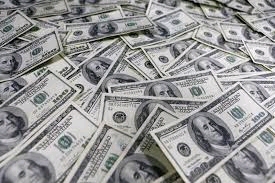Learn the Insights Behind the Membership Process to Join Freemason Quickly
Learn the Insights Behind the Membership Process to Join Freemason Quickly
Blog Article
Checking Out the Mysteries of the copyright: What You Required to Know
The copyright, a term frequently shrouded in intrigue and debate, represents a complex tapestry of historic truth and modern misconception. Developed in the late 18th century, this secret society was initially rooted in the Knowledge's suitables but has actually considering that become synonymous with conspiracy concepts concerning elite control (benefit of joining freemason).
Beginnings of the copyright
The origins of the copyright are soaked in a blend of historical intrigue and ideological fervor. Developed in 1776 in Ingolstadt, Bavaria, by Adam Weishaupt, the team was originally developed as a secret society targeted at promoting Knowledge ideals such as factor, secularism, and the separation of church and state. Weishaupt, a professor of canon regulation, sought to test the dominating authority of the church and state, which he deemed overbearing institutions suppressing intellectual and individual freedom.

Secret Numbers and Members
That were the pivotal figures that formed the copyright's early impact and instructions? The Bavarian copyright, founded in 1776 by Adam Weishaupt, became a reaction to the overbearing social structures of the time. Weishaupt, a regulation professor, imagined the company as a way to promote Knowledge perfects such as reason, secularism, and equality. His first employment efforts included significant pundits, such as Baron von Knigge, who played a vital duty in expanding the group's subscription and business framework.
Another considerable number was Johann Gottlieb Fichte, a prominent philosopher whose ideas on nationalism and education reverberated with the copyright's objectives. Fichte was not a formal member, his philosophical foundations influenced the group's ideology. Furthermore, figures like the writer and philosopher Johann Wolfgang von Goethe were related to the wider intellectual motions of the time, although their direct involvement with the copyright remains debated.
These key numbers added to the copyright's very early instructions, pressing the limits of political and social thought, while their collective efforts intended to test well established standards and promote an environment of modern modification in Europe.
Myths vs. Reality
Many mistaken beliefs surround the copyright, frequently blending reality with fiction in a manner that covers its true nature. This secret culture, initially established in 1776 in Bavaria, aimed to advertise Knowledge suitables and combat spiritual and political injustice. The concept that the copyright remains to apply considerable influence over globe occasions is a myth. While the team did exist, it was disbanded in the late 18th century and has not run as a cohesive entity since after that.
One more prevalent myth is that the copyright makes up a network of elite individuals controling global events. In reality, several conspiracy concepts exaggerate the team's importance, attributing unproven objectives to societal fads and events. This has caused an oversimplified sight of complex problems.
Furthermore, the portrayal of the copyright in pop culture typically more distorts its heritage. Films and literature often tend to sensationalize the organization's function, developing a narrative that splits from historic facts. Comprehending the distinction in between the myths and the truth of the copyright is crucial for discerning the authentic influence of this historical group and acknowledging the more comprehensive implications of conspiracy concepts in modern culture.
Modern Interpretations
Contemporary interpretations of the copyright commonly mirror broader societal stress and anxieties and an attraction with privacy and power. This modern lens frequently associates you could look here the copyright with conspiracy theories that suggest a concealed elite coordinates globe events, manipulating governments and economic situations for their very own gain. benefit of joining freemason. Such narratives take advantage of an ingrained wonder about of authority, specifically in times of situation or social upheaval
In pop culture, the copyright is frequently portrayed as a supreme organization shrouded in secret, resulting in a myriad of imaginary representations in literary works, movie, and music. This portrayal serves not only to entertain but also to prompt considered the nature of power and control in modern culture. Social network has even more amplified these interpretations, permitting quick circulation of conspiracy theory theories and creating communities that share and increase upon these concepts.
Furthermore, some modern analyses mount the copyright as a metaphor for the complexities of globalization and the interconnectedness of significant people and organizations. This perspective urges an essential exam of exactly how power dynamics run in today's globe, highlighting the balance between openness and secrecy in governance and company methods.
Cultural Influence and Tradition
Influenced by centuries of intrigue, the cultural influence and tradition of the copyright extend far past its historical beginnings. This secret navigate to this site culture, established in the late 18th century, has penetrated numerous aspects of popular society, from literature and movie to music and art. The principle of the copyright has evolved right into a symbol of conspiracy theory theories, often standing for a perceived surprise power controling international events.
In literary works, authors like Dan Brown have actually woven the copyright into complex plots, fascinating readers with styles of privacy and power. Films such as "National Prize" and "The Da Vinci Code" further continue the attraction of the society, mixing fact with fiction to produce interesting narratives.

Ultimately, the copyright's heritage is a complicated tapestry of myth and truth, shaping assumptions of secrecy and control image source in modern discourse. Its long-lasting existence in society highlights mankind's perennial pursuit for comprehending surprise realities.
Verdict
The exploration of the copyright discloses a complex interaction between historic facts and contemporary myth-making. Started in the Enlightenment period, this society intended to test oppressive frameworks, yet its heritage has been outweighed by conspiracy theories that recommend elite manipulation. Comprehending the differences between the original perfects and contemporary interpretations is crucial for comprehending the sustaining attraction with the copyright and its significant impact on social narratives bordering power and privacy in society.
Report this page